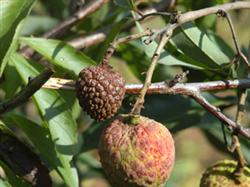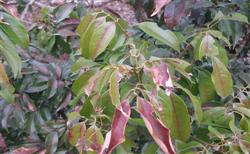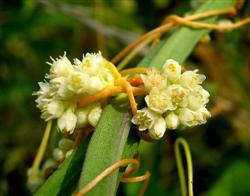Cultivation and Management techniques of Litchi

Litchi is a kind of evergreen tall tree with strong trunk, deep roots and luxuriant leaves. The survival period is very long due to the change of natural climate, the role of man-made production and life has changed with the change of time, some of the native litchi in nature have been gradually selected and cultivated into sweet litchi, which is widely eaten by human beings today, while the other part has been preserved as sour litchi. The main varieties of litchi in Hejiang can be divided into two categories: sour litchi and sweet litchi. The seeds of sour litchi belong to native litchi. After growing and growing into trees, the tree potential and fruit of sour litchi maintain the characteristics of native litchi. Generally, the fruit matured on the market at the end of June, more than one month earlier than sweet litchi. Now the main varieties cultivated in our county are "Hebao" litchi, "white shell" and "Wubao". Due to the poor quality, late fruit and unsuitable production requirements and development of sour litchi. Sweet litchi was introduced from Guangdong more than 500 years ago. the main varieties are Dahongpao, Feizixiao, thallium dike, greenish, crimson sand orchid, nanmu leaf, Guiwei, antlers, glutinous rice curd and so on. And the largest output and quantity is "Dahongpao". Among the 715000 litchi plants in the county, it accounts for 90%, followed by Jiangsha orchid, thallium embankment, Feizixiao, nanmu leaf, Guiwei, Nuomici and so on. According to the mature period of litchi on the market, we divide the varieties that are only ripe on the market from the end of July to the beginning of August into late-maturing varieties, and those maturing in the middle and late ten days of July. The middle-maturing varieties are mainly Dahongpao, Feizixiao, Jiangshalan, Nuomi, etc., and the late-maturing varieties are thallium dike, greenish, nanmu leaf and cinnamon flavor. The late-maturing varieties with green, thallium dike and middle-maturing varieties Feizixiao and Jiangshalan have great potential for development in terms of appearance, color and endoplasmic quality. 1. Seedling colonization 1. For the selection of fixed seedlings, first of all, large seedlings should be selected. The grafted seedlings should grow healthily, the leaves should be dark green, and the stem diameter of the unearthed part should be at least above 1.5cm. The seedling height should be above 60cm. Secondly, there should be more than 2 excellent late-maturing varieties. 2. Soil selection: the planting site requires a slightly acidic soil with deep soil layer, fertile soil and rich organic matter. It is best to have convenient transportation and convenient water drainage and irrigation. Purple shale soil should not be selected and planted in areas above 600 meters above sea level. 3. Planting period and methods: the best planting period is spring (from early March to mid-April) or autumn (from mid-September to late October). Generally, the planting amount of 18-20 plants per mu (plant spacing 7 × 7 meters or 6 × 7 meters) should not exceed 40 meters per mu. Before planting, the fixed-point line should be set to dig the nest 1 meter deep, 1 meter long and 1 meter wide. Application of sufficient fertilizer at the bottom of the nest: 100 jin of weeds, 200 jin of human and animal dung, and 3-5 jin of calcium superphosphate. After the soil is covered, it is piled into the shape of steamed bread. The seedlings are planted in the middle of the nest plate about 10-20 cm above the soil surface. Do not hammer and foot tower when planting. After planting, pour enough water to fix the root, and each plant is watered not less than 100 jin. Second, the management after planting requires good fertilizer and water management and disease and pest control. After seedling planting, the root system injury has not yet recovered, and the fertilizer absorption is poor, so it is necessary to irrigate and prevent drought in time. Generally, it is necessary to apply a small amount of fecal water after six months of survival, based on the fertilization principle of "eat less and eat more". At the same time, we should also pay attention to the prevention and control of diseases and pests. After 2 years of survival, the application amount of human and animal manure and nitrogen fertilizer can be increased, generally applied four times a year, each plant should not be less than 100 jin of human and animal manure, and urea can be added 3-4 taels per 100 jin of human and animal manure, which is beneficial to promote the shoot and form the crown as soon as possible. 3. Management of fruiting trees 1. Fertilization: after litchi was put into production, with the increase of trunk, crown, tree age and the amount of laurel, all kinds of fertilizers applied to the soil should be increased, and the kinds of fertilization should be mainly phosphorus and potassium fertilizers, supplemented by nitrogen fertilizers. It is better to use mature, weeds, human and animal dung, plant ash mixed with potassium sulfate or superphosphate. Fertilizer was applied four times a year: once in the Beginning of Spring (the first 10 days), the Beginning of Summer (the first 10 days), the Beginning of Autumn (the first 10 days) and the Beginning of Winter (the first 10 days). Fertilizer application amount: generally, it should be decided according to the crown size of the fruit tree and the amount of fruit hanging. The larger the age of the tree crown is, the more the fruit should be applied, otherwise it can be applied less accordingly. For 10-25-year-old trees, each tree should be applied 50-150 jin of human and animal manure, 2-5 jin of plant ash, 1-2 jin of phosphate fertilizer and 50-150 jin of water. For trees more than 25 years old, each tree is not less than 150-250 jin of human and animal manure, 5-10 jin of plant ash, 3-5 jin of phosphate fertilizer and 150-500 jin of water. There are two kinds of fertilization methods: annular ditch application and annular sprinkling. The ditch depth is 20-30cm wide 30cm, the soil 10cm is deeper than the drip line under the canopy or 2-2.5m away from the trunk, and the part is the annular zone of 50cm wide crown for one week. 2. Control shoot pruning: (1) shoot control: after litchi is put into production, it is generally not easy to shoot in summer, but shoot in spring and autumn is beneficial to crown growth. The autumn shoot is the mother branch that blossoms and bears fruit in the following year; it is the easiest to form flower moss, and the mother branch that blossoms and bears fruit is generally the robust branch formed from the Beginning of Autumn to the department. Therefore, in the work of shoot control, some of the branches of pomelo in spring and the autumn shoots of the Beginning of Autumn should be retained, and the branches on the canopy in other seasons should be removed in time. (2) pruning: pruning should be carried out in summer, autumn and winter, especially autumn pruning. After fruit picking, timely pruning of fruit stalks and damaged dry branches and withered branches, as well as late autumn shoots after the End of Heat. Summer pruning is mainly to control and sprout wild branches in summer, reduce competition with fruit for nutrients, control fruit drop, cut off dry and withered branches, disease and insect branches and shade branches in winter, and adjust crown tree shape at the same time. (3) Disease and pest control: the common diseases and insect pests that damage litchi are mainly gummy disease, foot rot and downy Phytophthora which is harmful to fruit. The main pests are star beetles that damage the trunk and longicorn beetles on branches, poisonous butterfly moths that harm one side of leaves, leaf roll moths, and stem borer and bugs that damage fruit. For the prevention and treatment of sulfur gum disease and foot rot, you can choose to manually scrape the disease class, and then use 8-1000 times liquid topiramate or carbendazim to smear the disease department for two consecutive times. Control of frost Phytophthora: when the fruit has the size of the mother finger or the face of the fruit is red, control it with 1000-1500 times of Redomir or 800-1200 times of disinfectant alum. In the prevention and control of longicorn beetles, wire is used to pass through the wormhole, paper or cotton balls are used to touch the dichlorvos solution into the hole, and the branches of longicorn beetles are concentrated to mourn the injured branches. Control pedicle borer (also known as fruit pedicle worm): Xiehua injection seeds, young fruit "soybean" when the size of the tree crown with 1500-2000 times liquid "Le Si benzene" spray, or with Chongmitong 1200-2000 times liquid to spray the crown alternately, 2-3 times in a row, once every 5-7 days, in case of continuous rain or spray several times. The control of poisonous moth, Phoenix butterfly and leaf roll moth is the most serious in the young fruit stage (from mid-June to early July). In the first ten days of June, insecticides such as Shachongshuang, Dianshen, Lexibin and other insecticides can be sprayed alternately for 3-4 times every 7 days. (4) the method of spraying: choose a high-quality and high-efficiency sprayer to spray the ground from the inside to the outside, from the top to the bottom and inside the canopy.
- Prev

There are new ways to remedy the frost of litchi.
In winter, the temperature is low, the precipitation is less, and the low temperature frost and freezing weather occur frequently. As a result, most of the litchi were damaged by frost in varying degrees, and the top leaves were damaged and withered. Therefore, we must do a good job of frost prevention in time, and the specific measures are as follows: before the frost comes, the whole garden should be sprayed with new high-fat film to keep warm and prevent frost.
- Next

How to control dodder on litchi and longan
Dodder has no roots and no leaves, but it has a zigzag sucker (or sucking roots) on the stem. It absorbs nutrients by sucking roots deep into the bark, affecting the growth of fruit seedlings and causing seedlings to die in serious days. It is more common in mountain mature litchi orchard that dodder can blossom and bear seeds, the flowers are small white, and the fruit will fall off after ripening.
Related
- Moge, come on! The staff of the peasant association in the producing area of cantaloupe were frightened when the crowd gathered.
- Causes and Solutions of low Fruit setting rate of Apple
- Symptoms and control measures of passion fruit virus disease
- Fruit growing lesson: how do apple orchards keep high yields?
- Can you build orchards in the mountains? What are the pros and cons?
- How to manage the coloring period of Crisson grape?
- This paper introduces the processing technology of two kinds of fig products.
- How much is a month for retired teachers in rural areas by 2020?
- How can strawberry planting increase sugar content? We should pay attention to management in many aspects.
- What are the cultivation techniques on how to improve the yield of golden fruit?

